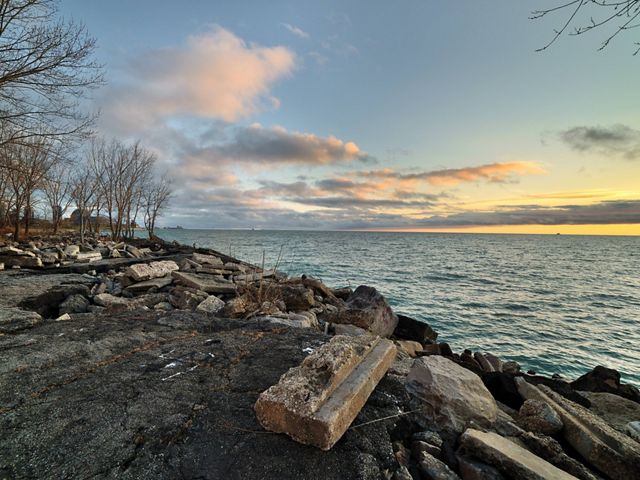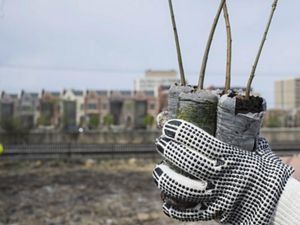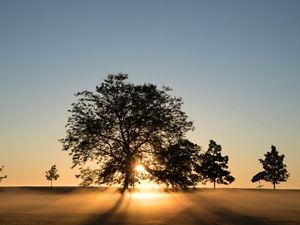A Conversation About Race, Class and Environmental Justice
Q&A with Mila K. Marshall


Following up to their first conversation, Urban Ecologist Mila Marshall and State Director Michelle Carr dive deeper into issues of race, class, inclusivity and environmental justice.
Michelle: After we shared our first Q&A on social media, there was a deep discussion on TNC’s Facebook page about the intersection of American poverty and environmentalism. How do we bring this lens to our work as environmentalists?
Mila: Our first conversation and blog post were focused on race, as we were responding to a series of racially-motivated incidents. In the Facebook discussion, a user brought up the point that environmental justice isn’t about race, but poverty. And depending on the lens and angle we use to look at it, he’s right. In this moment, environmental justice conversations are very focused on urban areas and the impact of environmental harm on Black and brown communities. In many of our cities, these are the communities that are closest to factories, industrial pollution, poor water quality and other environmental stressors. We need to recognize this truth—and also need to remember everyone else who is harmed by the harm that is done to our environment. We don’t want to pigeonhole the environmental justice conversation in one direction. When you shift the lens of the conversation, and look at the ties between pollution and poverty, then you get every group of people, every landscape: Black people, white people, immigrants, veterans, the homeless and houseless, the elderly, people with mental health issues, people with chronic health issues. The list goes on.
This matters because it makes us realize that we are missing a chance to build an alliance. Imagine if we had a holistic, socioeconomic environmental justice conversation. How many more people would be willing to work together to dismantle bad policies and hold industries accountable? We just need to be able to connect the dots. If we don’t connect the dots, and if we don’t see the connections between the harm we are receiving, we can’t create pathways to dismantle it.
Quote: Mila K. Marshall
We just need to be able to connect the dots. If we don’t connect the dots, and if we don’t see the connections between the harm we are receiving, we can’t create pathways to dismantle it.
Michelle: Let’s dig into that a little more. What would that conversation look like? How do we begin to connect those dots?
Mila: Everyone is paying for the sins of racism and bigotry in different ways, because racism permeates every single sector of society. In this moment, as people are becoming more aware and vigilant, how do we use this to build momentum? How do we see those we are leaving behind?
For example, there might be a poor white town in a rural part of the state being impacted by racist policies happening further upstream. So if we are starting to dismantle and change the system, how can we account for others who are disenfranchised? It is important to me that we recognize that the conversation has to broaden or expand. We are often so place-based in our approach to environmental harm that we forget no one escapes it.
For me, that Facebook conversation pushed me to think about who is negatively impacted by environmental harm; it had me return to the practice of being the ally that I expect. You have to ask yourself: What does it take to show up for communities that I cannot speak on behalf of, because I don’t belong to them? How do I build up relationships? How do I learn to be a messenger? How do I advocate in a way that it doesn’t cause harm? If I misstate something, how are people impacted?
I’m just now starting to understand my process of how I show up for people and why. One of those is for differently abled communities; how do I speak up for people with different abilities? Here I am, a recipient of white allies working for Black representation in the outdoors. This is a “tag, you’re it” scenario. Who can you stand up for? Ask yourself: Now that I’m here, who else isn’t?

Michelle: By not addressing the interconnections between race, class, human health and environmental health, we’ve missed a lot of opportunities. What else are we missing right now?
Mila: When you look at people working in the environmental movement, most are able bodied, white and not impoverished. So it’s no wonder that these issues haven’t been addressed. That’s why we must add the perspectives of different people—people of color or people with different bodies or people who have experienced poverty—our perspective and our approach will be different.
But we also need to look at issues in our society as a whole. We have to ask: what is causing this harm to our environment, and to people? We have a capitalist ego that pushes us toward success no matter what the cost. We have all of these products we are told to buy to improve ourselves. And the more successful we are, the more we consume, and the better we feel—to me, that’s a sickness. How can you be successful if your business model kills things and harms nature unnecessarily?
If you’re someone who is benefiting and receiving prosperity from this harm, and you have the ability to insulate yourself from this harm, all you know is that you’re ok. You stay insulated. You don’t have a reason to hear from those who are on the receiving end of the harm we are doing to the environment.
Michelle: How do we break this cycle?
Mila: What’s so special about being human is that we have free will. We can decide to not cause harm, even if it hurts us in some way. We get to decide about keeping resources away from others, we get to tease apart why we are doing something. Sometimes making these decisions is uncomfortable. It’s hard to look at our businesses or even our own ways of living and consumption that are easy. It’s hard to look at ourselves and see how we perpetuate harm knowingly or unknowingly. But no birth is easy, and we cannot continue to direct or redirect the impact of what we do to nature. Sooner or later it catches up to us all—for example, no one can escape climate change.
It’s a privilege to think this deeply, and it forces us to ask ourselves: do we really believe we are equal? For me, separateness is an illusion. If you think about it, humans are 60 percent water, right? If you live in Cook County, you’re getting that water from Lake Michigan—the same as me and the other 2.5 million people in Chicago. That means we have the same water profile, that we are extensions of Lake Michigan herself. You are my brothers, my sisters, my cousins, and Lake Michigan is our mother. So this competition for resources and access that comes from our capitalist system doesn’t have to be. We can learn from nature to see how similar we are, find our similarities, and live in balance with each other and the natural world.



